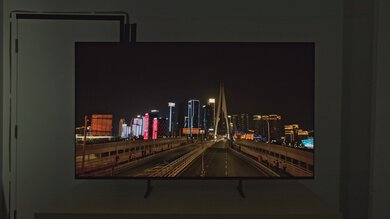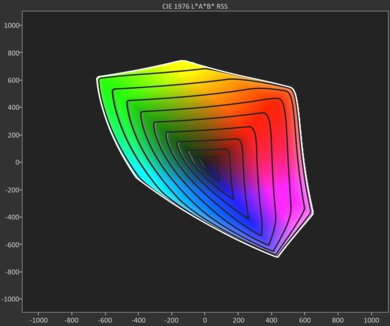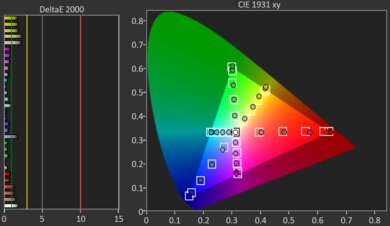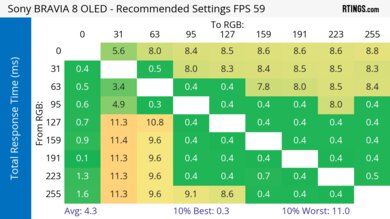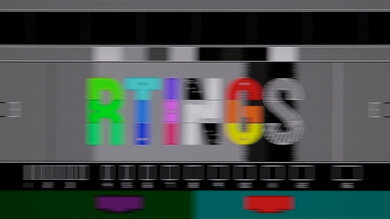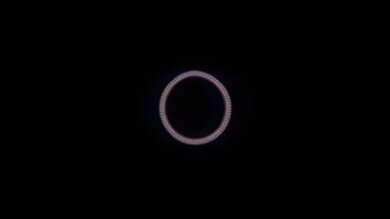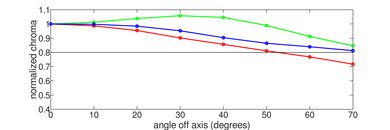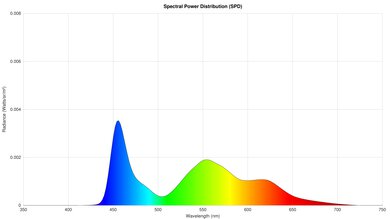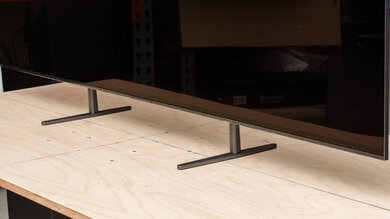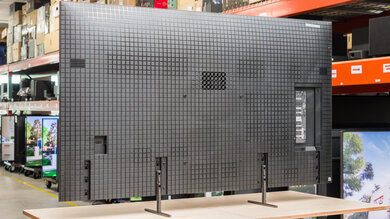The Sony BRAVIA 8 OLED is Sony's OLED option in their 2024 BRAVIA lineup and is the successor to the Sony A80L/A80CL OLED. It sits above the Sony BRAVIA 7 QLED and below the Sony BRAVIA 9 QLED. Unlike the Sony A95L OLED, the BRAVIA 8 uses a traditional WOLED panel instead of a QD-OLED panel. The TV uses the popular Google TV interface that's packed with apps and has other smart features like voice control and the ability to cast content from your phone. It's also loaded with modern features like HDMI 2.1 bandwidth, up to 4k @ 120Hz, VRR support, and Dolby Vision HDR. The TV has a built-in 50W 2.1 channel speaker system, and you can also use the TV as a center channel with compatible Sony soundbars and receivers. We bought and tested the 65-inch model, and it's available in three sizes: 55-inch, 65-inch, and 77-inch.
Our Verdict
The Sony BRAVIA 8 is very good for mixed usage. Despite not being the brightest model in HDR, it looks great with the lights turned off thanks to its inky blacks and vibrant colors. It performs decently with the lights turned on, where it maintains deep blacks and saturated colors. However, it does struggle more with reducing the intensity of direct light sources. When you want to pick up your controller, it's a solid option due to its clear motion and modern gaming features. It's also a stellar model for when your friends come over, since it has a wide viewing angle.
Near-infinite contrast ratio for perfect blacks with no blooming around bright highlights.
Incredibly wide viewing angle for a consistent image from the sides.
Colors are vibrant, lifelike, and bright.
Bright enough in SDR to overcome glare from indirect lighting.
Direct reflections are distracting.
The Sony BRAVIA 8 is great for a home theater. It has perfect black levels, so despite not being the brightest TV in HDR, it still provides an impactful HDR viewing experience. It displays vibrant colors in both SDR and HDR, with minimal banding in gradients, which is great. The brightness of HDR content is a little off, though, so HDR content doesn't quite look the way the filmmaker intends. Fortunately, you get Sony's image processing that does a great job upscaling and smoothing out low-quality content, which is great when the quality of your content is lackluster. Sadly, there's some noticeable stutter in movies and shows due to the TV's nearly instantaneous response time, although not everyone will be bothered by it.
Near-infinite contrast ratio for perfect blacks with no blooming around bright highlights.
Colors are vibrant, lifelike, and bright.
Does a great job upscaling and cleaning up low-quality content.
Noticeable stutter due to the TV's fast response time.
Requires calibration if you want very accurate colors.
The Sony BRAVIA 8 is decent for a bright room. It has the SDR brightness needed to fight glare from indirect lighting, but it struggles more with reducing the intensity of direct reflections; if you have a light source opposite your screen, its reflection is quite visible. Fortunately, colors remain well-saturated, and blacks stay very deep in a room with the lights on.
Blacks remain deep, and colors stay vibrant in a room with ambient lighting.
Bright enough in SDR to overcome glare from indirect lighting.
Direct reflections are distracting.
The Sony BRAVIA 8 is decent for watching sports. It struggles with reducing the visibility of direct reflections, so it's best used without sources of light placed opposite the screen. On the other hand, it's bright enough in SDR to fight glare from indirect light sources, so there's no issues if you have your overhead lights on. Colors are good on this TV, which leads to a vibrant image when watching any sport. You also aren't distracted by the dirty screen effect, which is great. The TV's image processing does a great job upscaling and cleaning up artifacts in low-quality feeds, which is very helpful since sports are typically broadcast in compressed HD. Motion looks smooth thanks to the TV's very fast response time, and the image holds up well when viewed from the sides of the screen due to its wide viewing angle.
Incredibly wide viewing angle for a consistent image from the sides.
Nearly instantaneous pixel transitions for no noticeable blur behind fast motion.
Colors are vibrant, lifelike, and bright.
Does a great job upscaling and cleaning up low-quality content.
Bright enough in SDR to overcome glare from indirect lighting.
Direct reflections are distracting.
The Sony BRAVIA 8 is great for gaming. The TV displays perfect black levels and wide range of vibrant colors, so despite only having decent HDR brightness in Game Mode, you still get an impactful HDR gaming experience. It has HDMI 2.1 bandwidth on two ports for up to 4k @ 120Hz with VRR, making it fully compatible with modern consoles. Furthermore, you get nearly instantaneous pixel transitions and low input lag, leading to a responsiveness gaming experience with clear motion.
Nearly instantaneous pixel transitions for no noticeable blur behind fast motion.
Colors are vibrant, lifelike, and bright.
Very low input lag at 120Hz for a responsive experience.
Requires calibration if you want very accurate colors.
The Sony BRAVIA 8 has adequate brightness overall. The TV is bright enough in SDR to fight glare from indirect light sources in a well-lit room. It has reasonable enough HDR brightness to provide an impactful HDR experience, but it doesn't fully display highlights in content mastered at 1000 nits.
Bright enough in SDR to overcome glare from indirect lighting.
The Sony BRAVIA 8 is an OLED, so it delivers perfect black levels in a dark room. Blacks are deep and inky with no blooming whatsoever around bright highlights.
Near-infinite contrast ratio for perfect blacks with no blooming around bright highlights.
The Sony BRAVIA 8 has good colors overall. It has impressive SDR color volume and good enough HDR color volume for vibrant and well-saturated colors in all forms of media. Its color accuracy in both SDR and HDR is adequate enough for most people, but those who want the most accurate image possible need to get the TV calibrated.
Colors are vibrant, lifelike, and bright.
Requires calibration if you want very accurate colors.
Note: We're in the process of improving our tests related to image processing, but this score should give you a general idea of how a TV performs overall with its image processing capabilities.
The Sony BRAVIA 8 has very good image processing. It does a great job upscaling low-resolution content and smoothing out low-bitrate content, so you get a clean looking image regardless of the source. There's some banding in dark gray and bright green gradients, but all other colors have barely any banding at all. Unfortunately, its PQ EOTF tracking is only okay, so the brightness of HDR content is a little off.
Does a great job upscaling and cleaning up low-quality content.
The Sony BRAVIA 8 has excellent responsiveness in Game Mode. It supports VRR and refresh rates up to 120Hz, so you can fully take advantage of your favorite modern console. Its input lag is a bit higher than similar models at 60Hz, but it's still fast enough to feel responsive, and it's very low at 120Hz. Pixel transitions are quick too, so fast motion is nice and clear.
Nearly instantaneous pixel transitions for no noticeable blur behind fast motion.
Very low input lag at 120Hz for a responsive experience.
We're in the process of fixing the way we evaluate a TV's overall motion handling. This section is currently broken, and the score isn't indicative of how well a TV handles motion overall.
Performance Usages
Changelog
-
Updated Nov 18, 2025:
Added the Sam's Club variant, the Sony BRAVIA XR8C, to the Differences Between Sizes And Variants section.
-
Updated Aug 13, 2025:
We added the 2025 variant, the Sony BRAVIA XR8B, to the Differences Between Sizes And Variants section.
-
Updated May 29, 2025:
Mentioned the newly reviewed Sony BRAVIA 8 II OLED in the HDR Color Volume section.
- Updated May 08, 2025: Converted to Test Bench 2.0.1. We did this to fix an issue with our scoring in the Supported Resolutions section, since TVs with a refresh rate higher than 144Hz were being penalized for not supporting 144Hz.
Check Price
Differences Between Sizes And Variants
We bought and tested the 65-inch Sony BRAVIA 8 OLED; the results are also valid for the 55-inch and 77-inch models. Costco sells variants of the TV with different model codes. These variants perform the same, but they come with an extended warranty, an extended trial for the Sony Pictures Core streaming service, and a backlit remote.
Sony released two variants of this TV in 2025, known as the Sony BRAVIA XR8B and the Sony BRAVIA XR8C. They're the exact same TV, with the same processor and panel, but there are a few differences in the software and available promotions. They don't include the Sony Pictures Core credits or promotional credits, and they lack the XR Contrast Booster feature, but otherwise perform exactly the same as the 2024 packaging.
| Size | Model | 2025 Variant | 2025 Sam's Club Variant | Costco Variant |
|---|---|---|---|---|
| 55" | Sony K-55XR80 | Sony K-55XR8B | Sony K-55XR8C | Sony K55XR80CB |
| 65" | Sony K-65XR80 | Sony K-65XR8B | Sony K-65XR8C | Sony K65XR80CB |
| 77" | Sony K-77XR80 | Sony K-77XR8B | Sony K-77XR8C | Sony K77XR80CB |
Our unit was manufactured in May 2024, as seen on the label.
Popular TV Comparisons
The Sony BRAVIA 8 is a very good TV overall, but it doesn't really stand out in the crowd of OLED TVs. Unlike the top-tier Sony A95L OLED, which uses a QD-OLED panel, the BRAVIA 8 uses a traditional WOLED panel and doesn't use MLA for increased brightness like the LG G4 OLED. It's most comparable to the LG C4 OLED, but it's not as bright in HDR, doesn't support 4k @ 144Hz, and it has surprisingly worse accuracy in SDR and HDR. It's also a bit more expensive than the C4, and since the C4's image processing is very close to the BRAVIA 8's, it's the better choice for almost everyone.
For more options, check out our recommendations for the best OLED TVs, the best gaming TVs, and the best TVs for watching movies.
The LG C5 OLED is better than the Sony BRAVIA 8 OLED. The LG is brighter in SDR, making it better suited for a bright room. The LG is also brighter in HDR and it's the more accurate TV, so it provides a more impactful HDR experience that stays closer to the filmmaker's intent. Finally, the LG is more versatile for gamers due to its four HDMI 2.1 ports and support for 144Hz.
The Samsung S90F OLED is much better than the Sony BRAVIA 8 OLED. Both of these OLED TVs deliver incredibly deep, inky blacks when viewed in a dark room, but HDR stands out better on the Samsung thanks to its higher peak brightness. Colors are also significantly more vibrant on the Samsung, and light scenes aren't as washed out. The Sony TV has the slight edge when watching older content or low-bitrate streams, as its processing can clean up the image better without losing fine details.
The Sony BRAVIA 8 II OLED is better than the Sony BRAVIA 8 OLED. The BRAVIA 8 II is a lot brighter in HDR, so it provides more impactful highlights in HDR content, and it's the more accurate TV. The BRAVIA 8 II also has the advantage when it comes to colors, thanks to its QD-OLED panel, so you get more vibrant colors with less banding in gradients. However, the BRAVIA 8 has lower input lag.
The Sony A95L OLED is better than the Sony BRAVIA 8 OLED. The A95L uses a QD-OLED panel, displaying more vibrant, lifelike, and brighter colors in HDR with less banding. It's also brighter in HDR and has better PQ EOTF tracking, so highlights pop out more on it, and it displays an image that is closer to the content creator's intent. The A95L is brighter in SDR, too, so it overcomes a bit more glare in a bright room. The A95L also has much better pre-calibration accuracy; it's so impressive that even the most astute observers won't feel the need to get it calibrated.

We buy and test dozens of TVs yearly, taking an objective, data-driven approach to deliver results you can trust. Our testing process is complex, with hundreds of individual tests that take over a week to complete. Most of our tests are done with specially designed test patterns that mimic real content, but we also use the same sources you have at home to ensure our results match the real-world experience. We use two main tools for our testing: a Colorimetry Research CR-100 colorimeter and a CR-250 spectroradiometer.
Test Results

The Sony BRAVIA 8 has adequate HDR brightness that makes highlights stand out during darker scenes. Combined with its remarkable contrast, this TV provides an impactful HDR viewing experience. Unfortunately, large bright scenes are significantly dimmer than smaller, specular highlights due to its aggressive Automatic Brightness Limiter (ABL).
These measurements are after calibrating the HDR white point with the following settings:
- HDR Picture Mode: Professional
- Brightness (HDR): Maximum
- Contrast (HDR): 90
- Color Temperature: Expert 2
- Peak Luminance: High
- HDR Tone Mapping: Gradation Preferred
Results with 'HDR Tone Mapping' set to Brightness Preferred:
- Hallway Lights: 657 cd/m²
- Yellow Skyscraper: 560 cd/m²
- Landscape Pool: 271 cd/m²
Most scenes are slightly brighter in Game Mode, but the difference is minor. Highlights pop out during darker moments in games, and combined with its remarkable contrast, this TV provides an impactful HDR gaming experience.
These measurements are after calibrating the HDR white point with the following settings:
- HDR Picture Mode: Game
- Brightness (HDR): Maximum
- Contrast (HDR): 90
- Color Temperature: Expert 2
- Peak Luminance: High
- HDR Tone Mapping: Off
Results with 'HDR Tone Mapping' set to Brightness Preferred:
- Hallway Lights: 537 cd/m²
- Yellow Skyscraper: 375 cd/m²
- Landscape Pool: 189 cd/m²
The Sony BRAVIA 8 has alright SDR brightness and overcomes glare from indirect light sources.
These measurements are after calibration with the following settings:
- Picture Mode: Professional
- Brightness (SDR): Maximum
- Contrast (SDR): 90
- Gamma (SDR): 0
- Color Temperature: Expert 1
- Peak Luminance: High
The TV is an OLED and has no backlight, so its self-lit pixels give it the same performance as a TV with perfect local dimming and no zone transitions. We still film the zone transition video on the TV, so you can see how it compares to a TV with local dimming.
The Sony BRAVIA 8 OLED has great SDR color volume. It covers most of the DCI-P3 color space, which is fantastic. Its coverage of the wider BT.2020 color space is just decent overall, and it struggles most with blues, cyans, and greens.
| Volume ΔE³ | DCI-P3 Coverage |
BT.2020 Coverage |
|---|---|---|
| L10 | 91.11% | 61.99% |
| L20 | 96.35% | 65.92% |
| L30 | 97.20% | 67.46% |
| L40 | 97.43% | 69.77% |
| L50 | 97.47% | 70.83% |
| L60 | 97.31% | 71.10% |
| L70 | 96.59% | 69.86% |
| L80 | 95.40% | 67.33% |
| L90 | 94.88% | 67.63% |
| L100 | 97.70% | 89.87% |
| Total | 96.59% | 69.81% |
The TV has good HDR color volume. It displays dark, saturated colors very well, and its ability to display bright whites is outstanding. It doesn't display light colors as well as it does whites, but it's still enough to display bright and vibrant colors. If you want a similar TV with superior color volume, consider the Sony BRAVIA 8 II OLED.
The Sony BRAVIA 8 has just okay pre-calibration accuracy. Its white balance is disappointing, with blues very overrepresented in mid-grays and brighter grays. The color temperature is noticeably cooler than our target of 6500K. The color accuracy is great, but there are still some inaccuracies with most colors. Gamma is close to our target of 2.2, but some scenes are slightly too dark, while others are slightly too bright.
The TV has fantastic accuracy after calibration. The white balance and color temperature are essentially perfect. Gamma is now closer to our target of 2.2, with only some bright scenes being slightly too bright. Color accuracy is even better than before, but there are still some minor inaccuracies with yellows, reds, light blues, and whites.
See our full calibration settings.
The TV has alright HDR pre-calibration accuracy. Its white balance is satisfactory, but there's a bit too much red and way too much blue in most shades of gray. This makes the TV color temperature noticeably cooler than 6500K. Unfortunately, the color accuracy is mediocre, with errors throughout its entire range.
The TV has good color accuracy in HDR after calibration. Its color temperature it now close to perfect. The TV's white balance is much better now, but there's still some inaccuracies with dark and mid grays. Unfortunately, the accuracy of colors has barely improved.
The Sony BRAVIA 8 has okay PQ EOTF tracking, but a large portion of shadows and mid-tones are displayed a bit dimmer than intended, and some mid-tones and highlights are displayed a bit brighter than intended. There's a gradual roll-off near the TV's peak brightness to maintain details in highlights that are brighter than what the TV is capable of.
The TV does an excellent job with upscaling low-resolution content like DVDs, standard-definition cable channels, and lower-resolution streams. Details are well-defined and clear enough, but very fine details and small hard-coded text are a bit hard to make out.
Sharpness processing was calibrated with no over-sharpening for low-resolution content, with the following settings:
- Sharpness: 50
- Reality Creation: Auto
The TV adds excessive sharpening when adjusting the default value of '50' to '51'. You can also see this unusual behavior by comparing the two photos below.
The TV has very good HDR native gradient handling. There's some noticeable banding in dark grays and bright greens, but all other colors have minimal banding or no banding at all.
This TV has low input lag when set into Game Mode, which ensures a very responsive gaming experience with very little delay between your actions with your controller or mouse and the action on-screen.
Outside of Game Mode, the TV's input lag is much higher, and there's a noticeable delay when hitting buttons on the remote, like when pausing a movie.
The Sony BRAVIA 8 OLED supports all common resolutions up to 4k @ 120Hz on two of its four HDMI ports. Chroma 4:4:4 signals are displayed properly with all supported resolutions when the TV's 'Content Type' is set to Game or PC, which is important for text clarity.
The TV supports HDMI Forum VRR and G-SYNC but doesn't support FreeSync. It works well across a wide refresh rate range and supports sources with Low-Frame-Compensation (LFC), which ensures your games remain nearly tear-free even when your frame rate drops very low.
The TV's CAD at 60Hz is fantastic. Most transitions from one RGB level to another are nearly instantaneous, but there's more overshoot than there is at 120Hz when transitioning from blacks. There's also still some noticeable persistence blur due to the nature of a 60Hz refresh rate.
With the exception of 1440p, the TV is fully compatible with everything the PS5 offers, like 4k @ 120Hz, as well as HDMI Forum VRR. It also supports Auto Low Latency Mode, so you don't have to manually switch to Game Mode to get the lowest input lag.
With the exception of 1440p, the TV is fully compatible with everything the Xbox Series X|S offers, including 4k @ 120Hz, HDMI Forum VRR, FreeSync Premium Pro, and Dolby Vision gaming. It also supports Auto Low Latency Mode, so you don't have to manually switch to Game Mode to get the lowest input lag.
Unfortunately, due to the TV's nearly instantaneous pixel response time, there's stutter with low frame rate content, which is most noticeable during slow panning shots.
This TV removes judder automatically from 24p sources, like a Blu-ray player or an external streaming device with a 'Match Frame Rate' feature. For 60Hz sources, like a cable box or the native apps, Motionflow has to be enabled, with both sliders at 'Min' and CineMotion set to 'High' to remove judder.
This TV doesn't have a traditional backlight and doesn't use pulse-width modulation (PWM) to dim each pixel, but it's not completely flicker-free. There's a slight dip in brightness that corresponds to the TV's refresh rate. This differs from the PWM flicker on TVs with LED backlights and occurs on every OLED we've tested. It's not noticeable, and most people won't be bothered by this, but it can still bother people who are extra sensitive to flicker.
The TV has an optional black frame insertion (BFI) feature that reduces the appearance of persistence blur caused by the TV's nearly instantaneous response time. It can only insert black frames at a 60Hz refresh rate.
This TV has an optional motion interpolation feature to improve the clarity of motion. It does a good job at smoothing out slower scenes, but there are some noticeable artifacts present. In faster-moving scenes, it can't keep up, and there are distracting artifacts and haloing.
The Sony BRAVIA 8's direct reflection handling is alright. Glare from lamps or windows opposite the screen is distracting since the TV doesn't do a good enough job reducing the intensity of them.
The Sony BRAVIA 8 has exceptional black levels in a bright room. Black levels are barely raised in a room with ambient lighting, and they remain deep and punchy.
The Sony BRAVIA 8 OLED has very good perceived color volume in a bright room. Colors shown at all luminance levels barely lose any saturation in a room with ambient lighting, so you still get a very colorful experience with the lights turned on.
The TV has an incredibly wide viewing angle that remains mostly consistent from almost any angle, but there is some color washout at more aggressive angles. Still, it's an excellent choice for watching TV in a group setting.
The Sony BRAVIA 8 uses a WOLED panel with a RWBG pixel structure where all four pixels are never lit at the same time. Due to its subpixel layout, it has minor issues with displaying text on Windows since ClearType isn't well optimized to non-RGB subpixel layouts, but most users won't be bothered by this.
The white subpixel does an excellent job helping the TV display bright whites, but it dilutes the color purity of greens and reds.
The Sony BRAVIA XR80 has HDMI 2.1 bandwidth on HDMI ports 3 and 4, with both supporting up to 4k @ 120Hz. Unfortunately, the HDMI 3 port is also the eARC port, so you lose a high bandwidth port when you plug a soundbar into the TV. The TV supports Dolby Vision, and it has an ATSC 3.0 tuner, so you can watch 4k content over the air.
Like some previous Sony TVs, you can use the TV's built-in speakers as a center channel when paired with a soundbar or receiver. Unfortunately, it only has Sony's S-Center input and doesn't have traditional speaker inputs, so it's only compatible with certain soundbars and receivers made by Sony.
The TV supports eARC, which lets you pass high-quality, uncompressed audio to a compatible receiver or soundbar through an HDMI cable. It supports all major audio formats, so you don't have to worry about compatibility with external sources.
The TV uses two metal feet that you can adjust to four different positions in total. You can have the feet close together in a narrow position or further apart from each other in a wider position. On top of that, you can set the feet to a low or high position, depending on your needs. The low position lifts the TV about 1.73 inches, so it sits very close to your table. The high position (pictured above) lifts the TV about 3.86 inches, so almost any soundbar fits underneath without blocking the screen.
Footprint of the 65-inch stand in the narrow position: 22.95" x 9.84".
Footprint of the 65-inch stand in the wide position: 48.98" x 9.84".
The back of the TV is made entirely of plastic and has the familiar checkerboard pattern similar to many other recent Sony TVs. The inputs are on the far left side of the TV when facing the front, but they're in a recessed cutout, so they're a bit hard to reach if you have the TV mounted flush to the wall. There's a plastic cover that can be used to hide the inputs section, but there are no clips for cable management.
The remote has a matte finish with blue speckles. Outside of that, the remote is identical to the one included with 2023's Sony A80L/A80CL OLED. It has buttons for popular streaming services, and you can use the built-in microphone to switch inputs, change apps, search within apps, ask for the weather and time, and change settings like brightness.
The TV has a decent frequency response. It produces some bass, but it's not enough for impactful bass. The TV's sound profile is well-balanced at moderate volume levels, making dialogue easy to understand. The sound becomes unbalanced near and at the TV's maximum volume, which is unfortunate since the TV doesn't get very loud.





